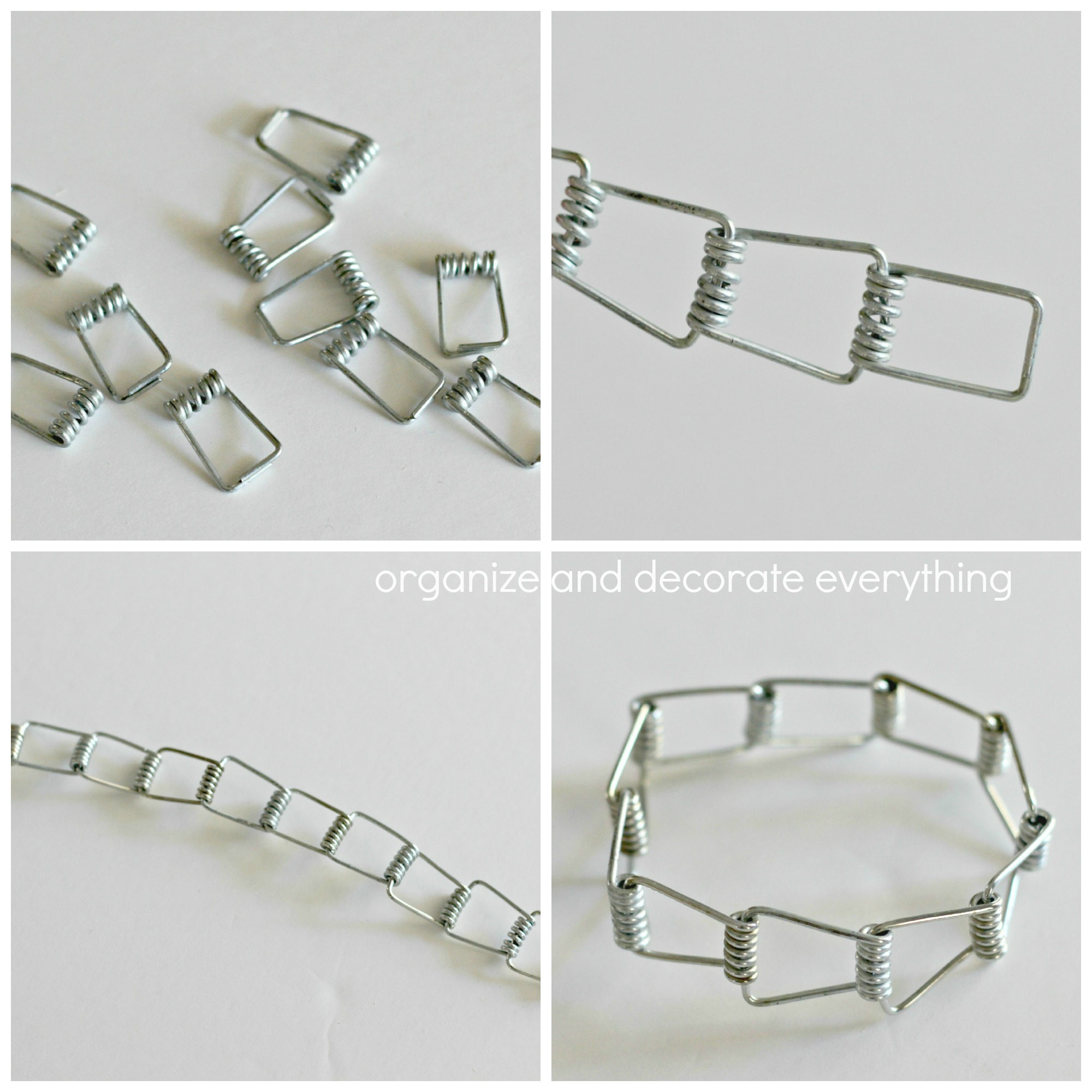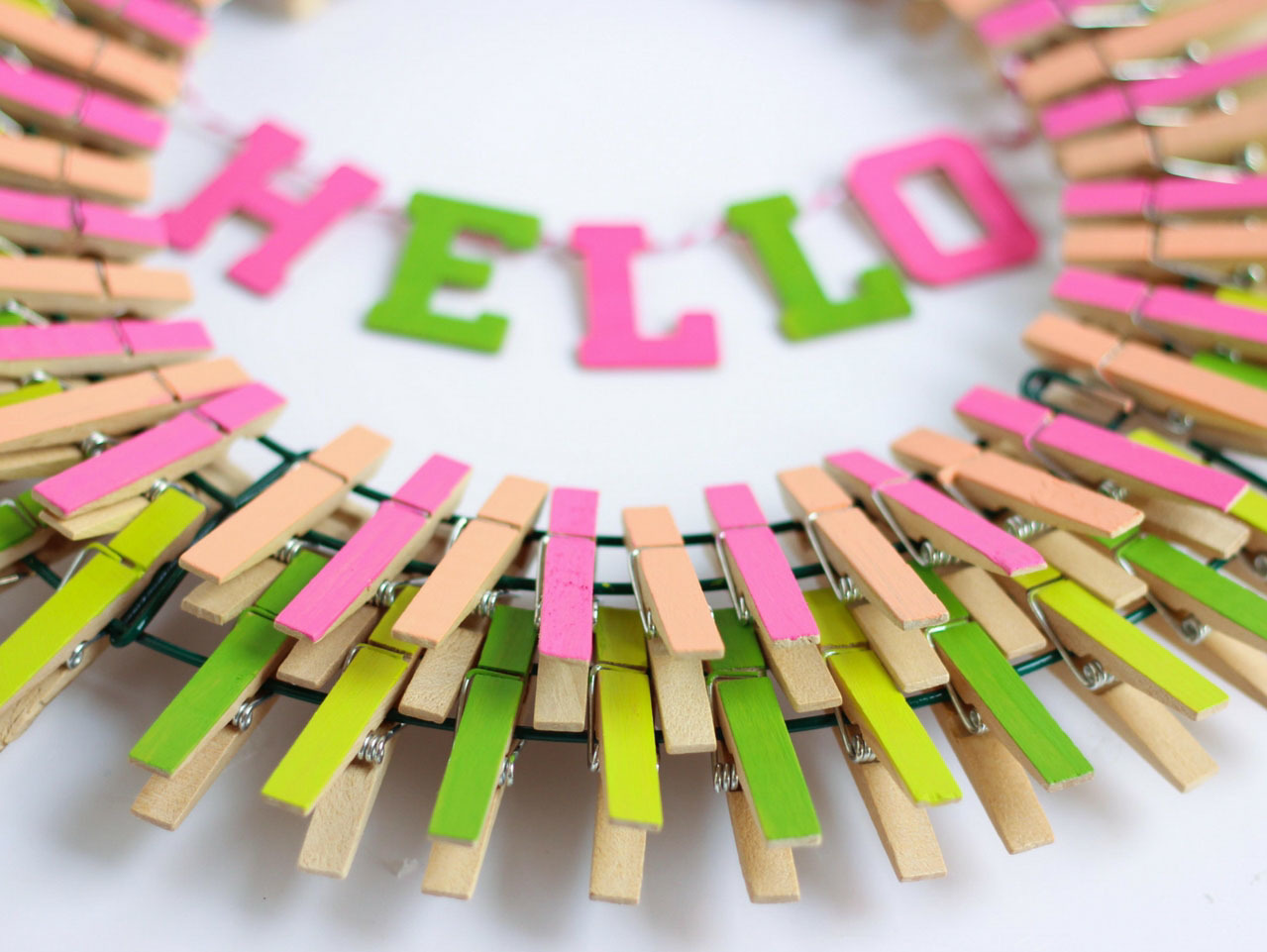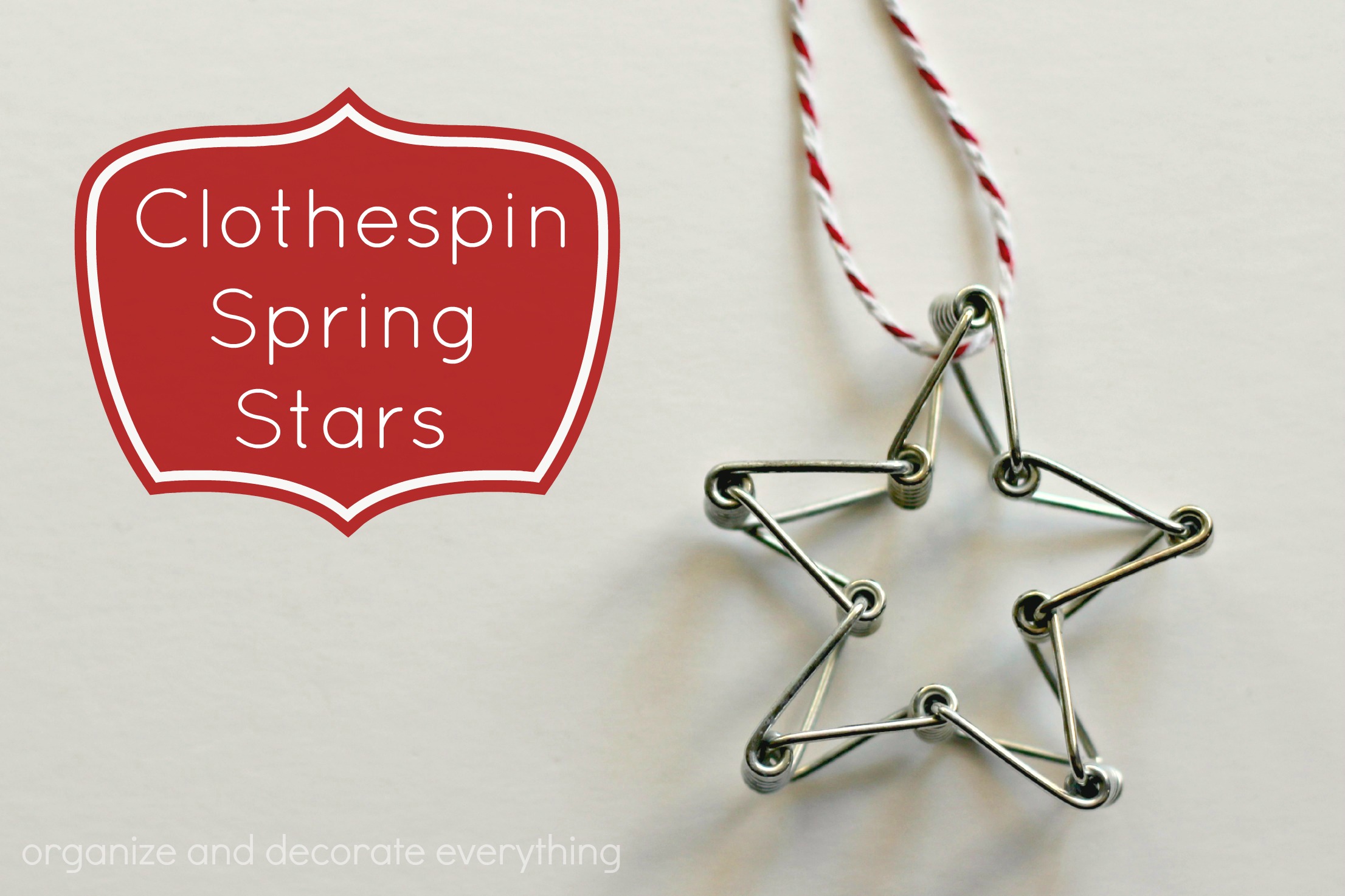Have you ever stopped to truly consider the humble clothespin spring? It's that little bit of coiled wire, a very small piece of metal, that gives a clothespin its gripping ability. This simple part holds our clothes steady on the line. It does a pretty big job for something so small, wouldn't you say?
For many, a clothespin is just a thing you use for laundry. You might not give much thought to its parts. Yet, the spring itself is a smart piece of engineering. It creates the pressure needed to hold things tight. This little coil is, you know, quite essential to the whole item working as it should.
Today, we're going to look closely at this often-overlooked component. We will see why the clothespin spring is more than just a bit of metal. It's a tiny marvel, really, with so many hidden uses. We'll explore its clever design, and also some surprisingly good ways to use it around your home. So, stay with us to discover all about this little powerhouse.
Table of Contents
- The Simple Genius of the Clothespin Spring
- Beyond the Laundry Line: Clever Uses for Your Clothespin Springs
- Keeping Your Clothespin Springs in Top Shape
- Frequently Asked Questions About Clothespin Springs
- The Enduring Appeal of Simple Solutions
The Simple Genius of the Clothespin Spring
The clothespin, as we mostly know it, has been around for a while. Its clever design, with those two wooden or plastic halves, relies completely on the spring. That spring is, you know, the heart of the whole thing. It gives the item its grip.
A Look at How It Works
A clothespin spring is usually a torsion spring. It works by twisting. When you squeeze the clothespin open, you wind the spring a bit tighter. This stores up energy. Then, when you let go, that stored energy makes the spring unwind. It pushes the two halves of the clothespin together. This creates a firm grip. It's a very simple idea, really, but it works so well.
This kind of spring design is actually quite common in many everyday items. You can see similar principles in things like door hinges or even some kinds of toys. The clothespin spring, though, is special because it's so small. Yet, it creates a lot of holding power. It's truly a testament to simple, good engineering, you know?
The way it works is, basically, about balance. The spring's tension needs to be just right. Too loose, and it won't hold. Too tight, and it's hard to open. This balance makes it reliable. It's a bit like how a good conversation needs balance, as, you know, sometimes mentioned in talks about collective health in public spaces. Every part, even a tiny spring, needs to be just so for the whole system to function well.
Why This Small Part Matters
Without the spring, a clothespin is just two pieces of material. It can't do its job. The spring gives it purpose. It turns two bits of wood or plastic into a useful tool. This shows how important even the smallest component can be. It's a pretty good example of how every bit counts, you see.
This small spring also represents a kind of quiet strength. It holds things firmly, day after day, in all sorts of weather. It does its work without any fuss. You could say it's a bit like the unsung heroes of our homes. They just get things done. This steady performance is, you know, something we often take for granted.
Think about how many times you've used a clothespin. Each time, that tiny spring did its job perfectly. This reliability is why clothespins have stayed popular. Even with all the new gadgets, the simple clothespin, with its essential spring, remains a household staple. It's just a classic, really.
Beyond the Laundry Line: Clever Uses for Your Clothespin Springs
So, what happens when a clothespin breaks? Often, the wood or plastic snaps, but the spring stays whole. Don't throw those springs away! They have so much more life in them. You can, you know, find new ways for them to help out. Repurposing these little bits is a smart move, and it's pretty good for the planet too.
Practical Household Helpers
Clothespin springs are surprisingly useful around the house. They offer a bit of tension and grip in small spaces. You might be surprised at how many little problems they can solve. They are, quite frankly, pretty versatile.
Cable Management: Got messy cords behind your TV or computer? A clothespin spring can help. Just slip it around a bundle of wires to keep them tidy. It's a simple way to, you know, make things look much neater. This stops tangles and makes things safer, too.
Chip Bag Closures: When you finish a bag of chips, you need to seal it. A clothespin spring, removed from its wooden parts, can act as a quick clip. It holds the bag shut pretty well. This keeps your snacks fresh, and it's a handy little trick.
Memo Holders: Need to stick a note somewhere visible? A spring can hold a small paper. You can attach it to a corkboard or even a fridge magnet. It gives a nice, firm grip. This is, you know, pretty useful for reminders.
Temporary Wire Ties: For small repairs or projects, you might need to hold wires together. A clothespin spring can work as a temporary tie. It's easy to put on and take off. This gives you a quick fix, so you can keep working.
Small Object Grippers: Trying to pick up a tiny screw or bead? If you're careful, a spring can give you a bit of extra grip. It's not for everything, but for some fiddly bits, it's pretty helpful. This can save you a lot of frustration, honestly.
Getting Creative with Crafts
For those who like to make things, clothespin springs offer a lot of possibilities. Their shape and springiness make them interesting components. You can turn them into all sorts of decorative or useful items. It's, like, a fun challenge to see what you can create.
Miniature Sculptures: Artists and crafters sometimes use these springs in small metal sculptures. Their coiled shape adds texture and form. You can bend them a little, or combine them with other tiny bits. This can lead to some really unique pieces.
Jewelry Components: With a bit of skill, these springs can be part of unique jewelry. They can be used as connectors or even as decorative elements. It's a way to, you know, add an industrial touch to your designs. This gives a very distinct look.
Dollhouse Furniture: For miniature enthusiasts, springs can become tiny furniture parts. Think of them as tiny bed springs or chair mechanisms. They add a realistic touch to small models. This is, actually, a very clever use for them.
Art Assemblages: In mixed-media art, these springs can be added for visual interest. They bring a bit of an unexpected element to a piece. It's about seeing the beauty in everyday objects. This can make your art stand out, you know.
DIY Fishing Lures: Some hobbyists use small springs as part of homemade fishing lures. Their movement and shine can attract fish. It's a pretty inventive way to reuse them. This shows how far creativity can go.
Unexpected Fixes and Gadgets
Sometimes, a clothespin spring can be a quick fix for something broken. It's not always a permanent solution, but it can get you out of a bind. Having a few spare springs around is, you know, pretty smart for these moments. They are, in a way, little emergency helpers.
Temporary Zipper Pulls: If a zipper pull breaks off, a spring can be a makeshift replacement. Just loop it through the zipper slider. It gives you something to grab onto. This is a simple, quick solution when you're in a hurry.
Small Clamp for Gluing: When gluing tiny parts together, you need a gentle clamp. A clothespin spring can provide just the right amount of pressure. It holds pieces steady while the glue dries. This is, actually, a pretty handy trick for model making.
Battery Terminal Cleaner: The rough ends of a spring can be used to gently scrape corrosion from battery terminals. It's a delicate job, but the spring can reach into small spots. This can help your electronics work better. It's a small but effective trick, you know.
Lock Picking Practice: For those interested in locksmithing as a hobby, springs can be repurposed. They can be used to practice tension wrench techniques. It's a very specific use, but it shows the versatility of the spring's design. This is, admittedly, for a niche interest.
DIY Mini Hooks: By bending the ends of the spring, you can create tiny hooks. These can be used for hanging lightweight items. Think of them for keys or small tools in a workshop. It's a pretty neat way to get more use out of them.
Keeping Your Clothespin Springs in Top Shape
Even though they are small, clothespin springs can last a long time. A little bit of care can make them even more durable. Understanding how they age helps you get the most out of them. It's, you know, about making things last.
Simple Maintenance Tips
Most clothespin springs are made of galvanized steel or stainless steel. This helps them resist rust. But, they can still get dirty or lose some of their springiness over time. A little bit of attention can help.
Keep Them Dry: After using clothespins outside, bring them in. Or, at least, let them dry completely. This helps prevent rust. Moisture is, you know, the main enemy of metal springs.
Clean Them: If they get muddy or grimy, a quick wipe with a damp cloth can help. You can also use a small brush to get into the coils. Clean springs work better and look nicer. It's a simple step, really.
Store Them Properly: Keep your clothespins in a basket or bag. This protects them from the elements. It also keeps the springs from getting bent out of shape. Proper storage is, actually, quite important for their longevity.
When to Replace or Repurpose
Even the best spring eventually loses its bounce. If a clothespin no longer grips well, the spring might be worn out. Or, it might be rusty. At this point, you have choices. You can, you know, either get new ones or find a new use for the old springs.
If the spring is very rusty, it's probably best to discard it safely. Rusty metal can be sharp. But if the spring is still mostly good, even if the wood is broken, that's when you think about repurposing. As we saw, there are many ways to give these springs a second life. It's about, you know, getting the most value from every item.
The idea of repurposing items, rather than just throwing them away, is a good one. It's a bit like how some scientists, like Jennifer Doudna, talk about editing DNA with great precision. We can, in a much simpler way, "edit" the life of an object by finding new uses for its parts. It's a small act, but it helps the planet. You can learn more about sustainable living on our site, and link to this page for more DIY ideas.
Frequently Asked Questions About Clothespin Springs
People often have questions about these small but mighty components. Here are some common ones, with simple answers. They are, you know, pretty straightforward.
What are clothespin springs made of?
Most clothespin springs are made from steel wire. This wire is often galvanized or made of stainless steel. Galvanizing means it has a protective zinc coating. This helps it resist rust and corrosion. Stainless steel naturally resists rust. Both materials make the spring strong and long-lasting. It's, basically, about durability.
Can you replace a clothespin spring?
Yes, you can, but it might be a bit fiddly. Some people buy bulk packs of replacement springs. Others just salvage them from broken clothespins. To replace one, you usually need to carefully unhook the old spring. Then, you put the new one into place. It takes a little patience. For many, it's easier just to get a new clothespin, but for others, it's a satisfying fix.
What can you use clothespin springs for?
Beyond hanging laundry, clothespin springs have many uses. They are good for cable management, sealing chip bags, and holding notes. People also use them in crafts, like making small sculptures or jewelry. They can even be used for temporary fixes, like makeshift zipper pulls. Their small size and springy nature make them very versatile. It's, like, surprising how many things they can do.
The Enduring Appeal of Simple Solutions
In a world full of complex gadgets, the clothespin spring stands out. It's a reminder that sometimes, the simplest ideas are the best. Its function is clear, and its impact is big. It helps us with a common household chore. It also offers a chance to be creative. This small piece of metal is, you know, quite a testament to good design.
The continued relevance of the clothespin spring, even today, shows something important. It shows that basic, well-made items always have a place. They contribute to the smooth running of our homes. They help keep things in order. This quiet reliability is, honestly, something to appreciate. It's a bit like how, as my text says, "Twitter is committed to improving the collective health, openness, and civility of public conversation." Simple, well-functioning parts, whether in a home or a platform, contribute to overall "health."
So, next time you see a clothespin, take a moment. Think about that tiny spring. It's doing its job, day in and day out. It's a small piece of everyday genius. It offers so much utility, both in its original form and when repurposed. It's a pretty good reminder that value can be found in the most unassuming places. You know, it really is.



Detail Author:
- Name : Norwood Johnson
- Username : danny64
- Email : hmorissette@yahoo.com
- Birthdate : 1994-08-21
- Address : 639 Terry Ferry Cruickshankfort, NM 51016
- Phone : 337.336.6609
- Company : Rohan, Maggio and Hayes
- Job : Registered Nurse
- Bio : Debitis dolor exercitationem non ducimus. Repellendus doloribus pariatur omnis ut sint. Id ex temporibus nam ut quia ipsum. Sapiente aspernatur recusandae tempore iusto similique pariatur non.
Socials
facebook:
- url : https://facebook.com/lernser
- username : lernser
- bio : Deserunt quis ratione aut. Id est qui architecto sequi cupiditate et.
- followers : 4595
- following : 1242
twitter:
- url : https://twitter.com/liana_official
- username : liana_official
- bio : Aliquid velit reprehenderit vel sunt eos. Quo sint quibusdam explicabo sed accusantium aspernatur rerum ut.
- followers : 6639
- following : 2112



























